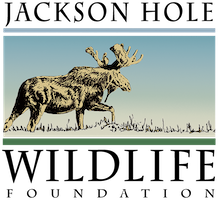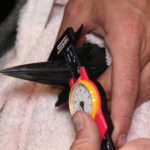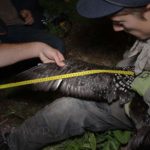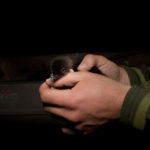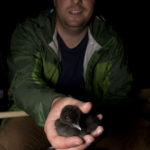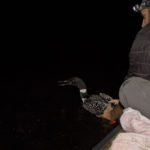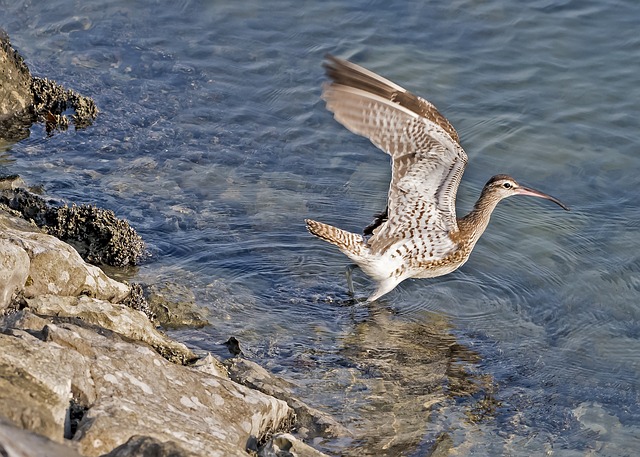
by jhwildlife | Mar 28, 2018 | Blog, Nature Mapping Jackson Hole
“I saw my first robin!” “I saw bluebirds!” “Did you hear the Sandhill Cranes the other day?” “The bears are out.” “Have you seen an Osprey?” “Not yet, should be here soon though.”
As March melts into April, Nature Mappers are excited for spring: we have new critters to see and hear. The wildlife data we submit become all the more interesting and important. This is the time of year we enter First of the Year sightings or FOY’s. We are measuring the natural pulse of spring. Some years, critters appear earlier, other years later, and some species reappear within days of the same date year after year. Your entries help track these annual variations. And if you don’t have the first sighting for the valley, you may well have the first in your area or the first for you! When you see these fresh arrivals, type “FOY” in the notes box of the data form to highlight your finding. Below are some species to look for with the earliest dates recorded between 2010 and 2015 in parentheses.
First of the Year sightings can be migrating birds or emerging or transient mammals. Stimulated by longer days, warmth, and the evolutionary coincidence of food, critters large and small mobilize. Midges, flies and true bugs begin to crawl and fly and become sources of protein for birds. Red-winged Blackbirds and Mountain Bluebirds arrive in the valley in March. In April, Common Nighthawks (4.11.13) swoop overhead through fresh insect hatches, along with Tree (4.8.14) and Violet-green Swallows (4.22.15). With more warmth (and insects), Yellow-rumped Warblers (3.6.10, 4.23.12), Vesper (3.24.12), Savannah (4.17.14), Chipping (4.21.15), and Lincoln’s (4.24.13) Sparrows show up in their various habitats. Warmer soils enable worms and the like to wriggle closer to the surface…within reach of probing beaks of American Robins, Long-billed Curlews (4.12.14), and White-faced Ibis (4.22.14). Anyone heard a Western Meadowlark yet?

Long-billed Curlew
As wetlands and ponds thaw, a variety of waterfowl are on display. American Wigeon (3.20.15), American Coot (4.6.10), Cinnamon Teal (4.8.14), Blue-winged teal (4.12.14), and Wood Duck (4.19.14) are in elegant breeding plumage. A flotilla of magnificent American White Pelicans (4.12.15) may be spied on the Snake River, with a Spotted Sandpiper pecking amidst the stones (3.22.12). Near by, the more ordinary granivores such as Brown-headed Cowbird (4.15.10) and Brewer’s Blackbirds (4.22.10) may flock in among Common Grackles (5.2.10), picking up old seeds and new bugs. Listen for the raucous calls of Yellow-headed Blackbirds (3.16.12) in marshes and skulking Sora (4.10.15).
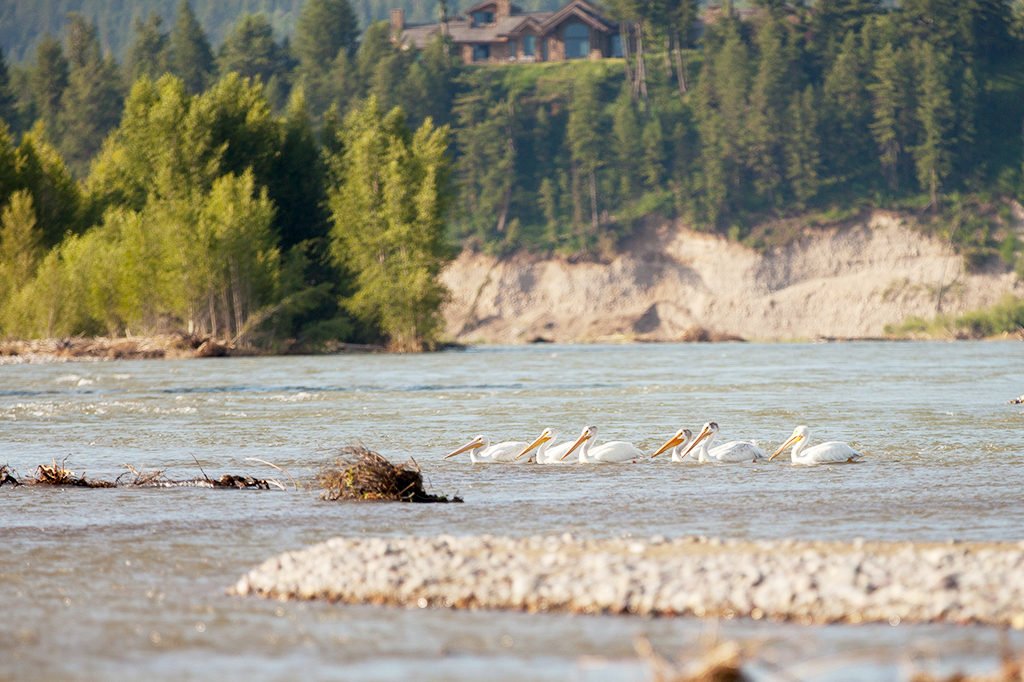
American White Pelicans
Favorites to spot or hear include mammals and amphibians. Uinta ground squirrels should be emerging from their burrows. They went down last August for the long winter, and are one of the earliest hibernating rodents to reappear (3.26.18). Keep an ear out for their high-pitched whistle and then look for scampering. They emerge in time to feed coyote pups and summering Red-tailed Hawks. Least Chipmunks will pop up as well (3.23.12). We all thrill at the trill of Boreal Chorus Frogs (4.11.13) in neighborhood ponds and floodplain pools. “Cold-blooded,” or technically ectothermic amphibians, are a true indication of warming weather. Wandering Gartersnakes gain mobility from basking in the sun. Amphibians and snakes are an under-reported prize for Nature Mappers.
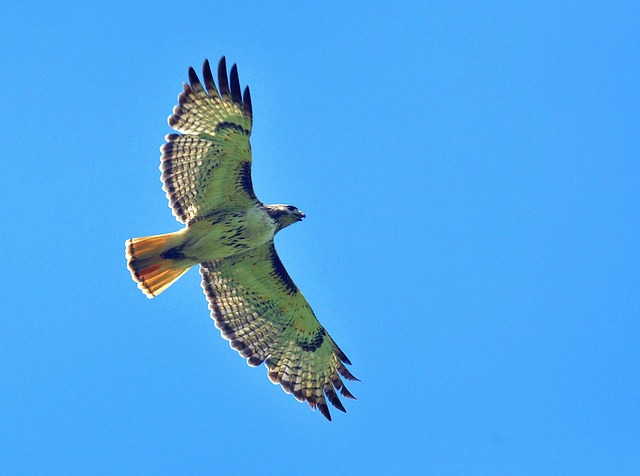
Red-tailed Hawk
Also, it is exciting to watch the world-renowned seasonal migrations of ungulates. When do the Wapiti begin to surf the green wave: moving by the thousands from the National Elk Refuge in sequence with the greening grass? Fresh forage provides essential calories and nutrition for females with soon-to-be-born calves. Hundreds of Pronghorn will arrive along the Path of the Pronghorn originating by Pinedale and weaving through the Gros Ventre into Jackson Hole toward the end of April. And where do the buffalo roam throughout the valley?
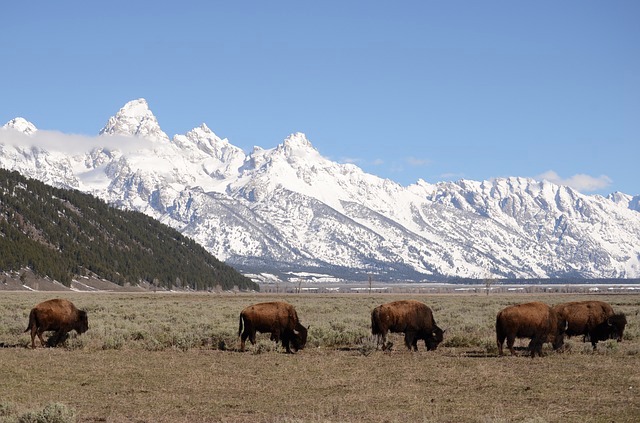
Where do the bison roam?
Some people consider April to be the off-season in Jackson. Nature Mappers know it is in fact the on season for wildlife. Enjoy entering your sightings that help us understand and protect these wonders of our valley.
–Frances Clark (Data compiled by Susan Marsh)
P.S. Curious what others have seen when? Click on the “All Observations” link on the bottom of the Nature Mapping JH Mobile Page. This is the list of all observations. You can filter by date, group, or species.
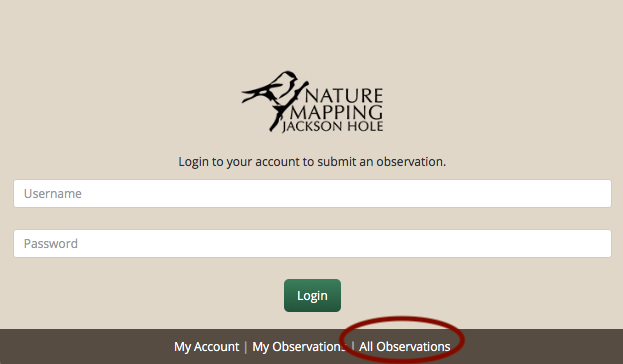
View All Observations
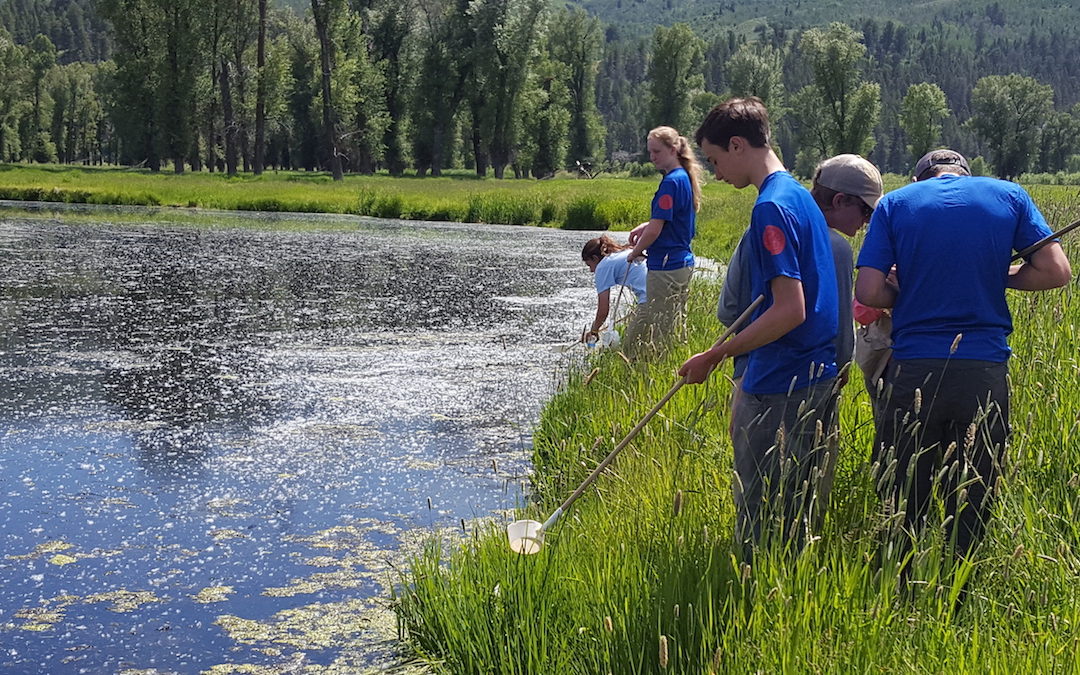
by jhwildlife | Mar 23, 2018 | Blog, Nature Mapping Jackson Hole
A new citizen science initiative will be launched this summer to better inform land management decisions in the heavily used Cache Creek drainage. The project is called the Neighbors to Nature: Cache Creek Study and will establish a four-way partnership between the U.S. Forest Service’s Bridger-Teton National Forest, Friends of Pathways, Jackson Hole Wildlife Foundation and The Nature Conservancy’s Wildflower Watch.
Last week, project partners received word from the U.S. Forest Service’s Ecosystem Management Coordination staff in Washington, DC and their Office of Sustainability and Climate that Neighbors to Nature: Cache Creek Study was selected to receive a $25,000 grant from the Citizen Science Competitive Funding Program. Out of a total of 172 proposals received nation-wide, Neighbors to Nature: Cache Creek Study is one of just six proposals to be awarded funding.
The project will recruit a youth crew from Friends of Pathways (FOP), volunteers from the Jackson Hole Wildlife Foundation’s (JHWF) Nature Mapping Jackson Hole program, and volunteers from The Nature Conservancy’s (TNC) Wildflower Watch. These citizen scientists will collect, analyze and interpret plant, wildlife, and trail use data. The information collected will help establish a baseline of observations, as well as an effective and consistent method to gather and process this data over time. Forest Supervisor Tricia O’Connor said that this project will help achieve the goal for the Cache Creek area to serve as an outdoor classroom and deepen the connection between people and nature. She also noted that the project will help local managers by providing an accurate, scientific view of the plant and wildlife populations in the area, as well as improved information about recreation use.
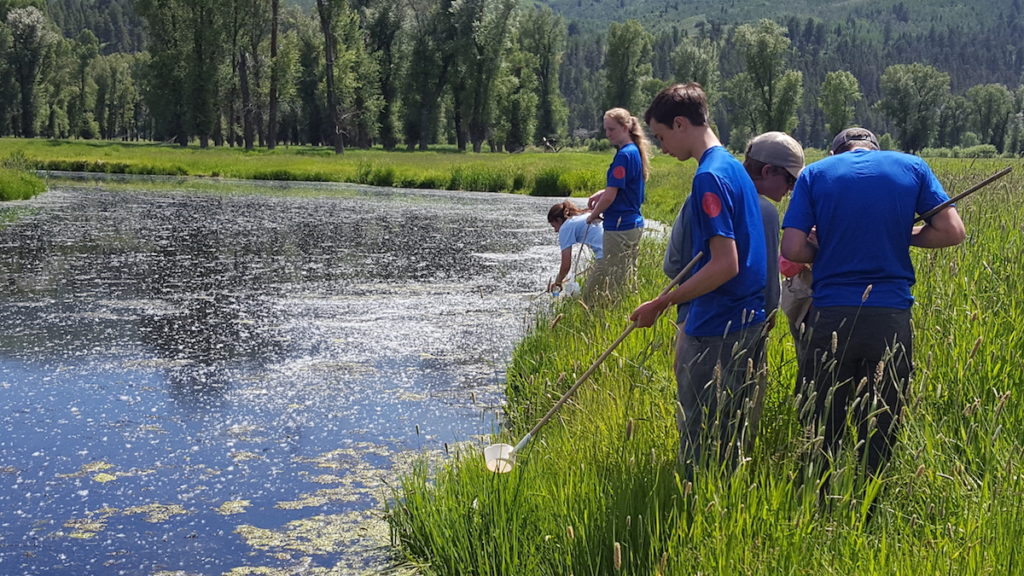
The Friends of Pathways youth crew in Jackson, Wyoming will become citizen scientists for the National Forest
Approximately 10 species of native and invasive plants will be located and monitored by volunteers, and trail counters will be purchased and installed in key locations to observe how the area is being used for recreation. Some volunteers will directly observe and report on wildlife movements in the area, which can be used to evaluate how recreation use may be influencing wildlife behavior and inform management actions such as seasonal restrictions. Phenological observations such as leaf-out, budding, and flowering of plant species will help monitor the effects of climate change on plant communities and track invasive species. Data will then be analyzed and provided to the public at large and the U.S. Forest Service to inform future management decisions in the area.
ABOUT FRIENDS OF PATHWAYS
Friends of Pathways (FOP) works closely with the town, county and federal land management agencies to advocate for sustainable transportation and healthy recreation opportunities in Jackson Hole. Over the last four years its Youth Trail Crew has employed local high school students to work in partnership with the Bridge-Teton National Forest on trail maintenance, rehab projects, and data collection. This year the crew will be trained by Nature Mapping Jackson Hole to record wildlife they encounter while at work on the trails each day. They will also work with The Nature Conservancy’s Wildflower Watch to record phenological observations at key sites. Finally, they will help to collect usage data from trail counters and perform surveys to determine the types of users on the trails. For more information visit www.friendsofpathways.org
ABOUT THE NATURE CONSERVANCY
The Nature Conservancy’s Wildflower Watch invites volunteer citizen scientists to join in the study of how climate change may be affecting local plants and wildlife. Specifically our volunteers will record “phenology” or the seasonal timing of events – such as first flowering dates for several wildflower species. Powered by this research and education, we can work with public and private partners to prevent these impacts from becoming serious problems. This is a great way for individuals to take action to protect the places and creatures we love, beginning in our own backyard. The Nature Conservancy is a global conservation organization dedicated to conserving the lands and waters on which all life depends. Guided by science, we create innovative, on-the-ground solutions to our world’s toughest challenges so that nature and people can thrive together. In Wyoming, we are conserving lands, waters, wildlife and the Wyoming way of life. For more information, visit www.nature.org/wyoming.
ABOUT BRIDGER-TETON NATIONAL FOREST
The National Forests exist to care for the land and serve people by sustaining the health, diversity and productivity of the nation’s forests and grasslands for present and future generations. The core concept for management is the sustainability of resources to provide for the greatest good for the greatest number of people in the long run. As an integral part of the Greater Yellowstone Ecosystem, the Bridger-Teton offers more than 3.4 million acres of public land for memorable wildlife, wild land, water, and diverse recreation experiences, notably during the winter. For the Neighbors to Nature project, the Bridger-Teton National Forest will help facilitator the partnership, provide guidance to ensure information will be useful to land managers, and assist with reporting and sharing information with the public. For more information, visit www.fs.fed.us/r4/btnf
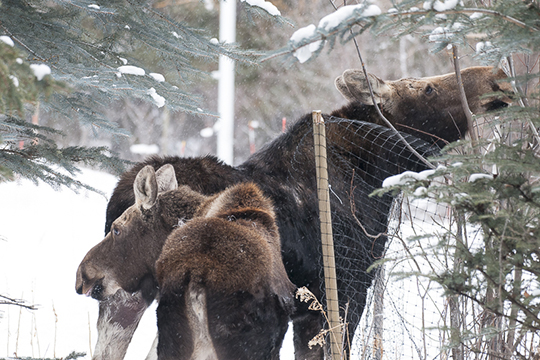
by jhwildlife | Feb 28, 2018 | Blog, Nature Mapping Jackson Hole
by Frances Clark

Two moose for the count by Gigi Halloran
First the stats, then the fun.
We had a windy day with off-and-on light snow, pretty good visibility, and temperature ranging from around 8 degrees to 18 degrees Farenheit in the Jackson area. We had 80 Moose Day volunteers on 33 teams covering 53 different areas. Unfortunately 14 teams struck out…no moose. This is always disappointing to the hardy observers, but “0” is important data, as well. We can get a feel for where the moose don’t go regularly over the years or the variability of their movements.
So where did the moose show up? Wilson once again had a high proportion: about 27 in different clusters and pairs. Grand Teton National Park from Kelly a bit north and west over through the Solitude development had approximately 25. Another eight were seen in the Jackson Hole Golf and Tennis area, including three spotted by Bryan, a guest staying with Randy Reedy. Bryan was getting into his car while Randy was out scouting! Volunteer time: five minutes. Jason Wilmot of USFS and partner saw 15 moose snowmobiling out to the end of the Gros Ventre road. Last year the team saw a remarkable high of 57 moose. Sarah Dewy and Steve Kilpatrick saw five moose in the Buffalo Valley area vs. 20 last year, and an overall low for that territory. The north and southern extremes of our count area had no moose. The total number of moose is 94, but we will double check for a couple of possible overlaps. This number is roughly average–87 is the average count, excluding two high years (2011 – 124 moose; 2017 – 172 moose –both years with alot of snow).
The most observed moose was one browsing and then sleeping along a row of willows just west of Stilson in Wilson. Over eight people reported seeing it there. We will count it once.
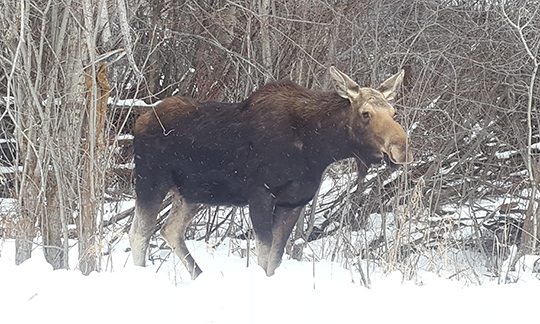
Eight mappers saw this moose, but it was counted once. By Amy Conway.
Other Highlights of the Day Besides Moose:
Several observers saw bald eagles in courtship. Bernie, Diane and Alice saw one pair of adults where the male bird was about 75% smaller than the female–this was an extreme example of a typical size difference in raptors females and males.
That team also sighted Townsend’s Solitaire and Snow Buntings on their territory south of Jackson. Morgan Graham took a picture of a Northern Shrike down in the same vicinity.
Trumpeter Swans, Barrow’s Golden-eyes, Mallards and mergansers were treats along the creeks and rivers.
Two groups of 15-16 elk were seen in different corners of Wilson. Pine Grosbeaks, European Starlings, woodpeckers, Great Blue Herons and coyotes also delighted Nature Mappers, especially those who did not see moose!
Thank you all for keeping your eyes out for moose in Moose Day 2018! The moose thank you, we at Nature Mapping Jackson Hole thank you.
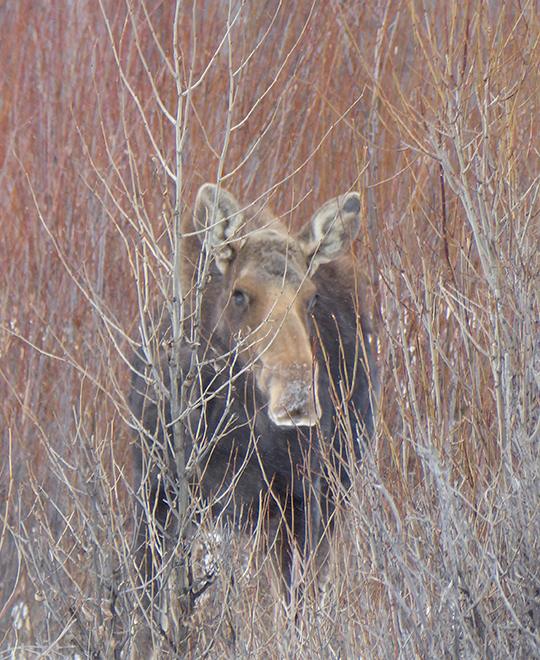
Moose hiding but counted on Moose Day by Kathy McCurdy
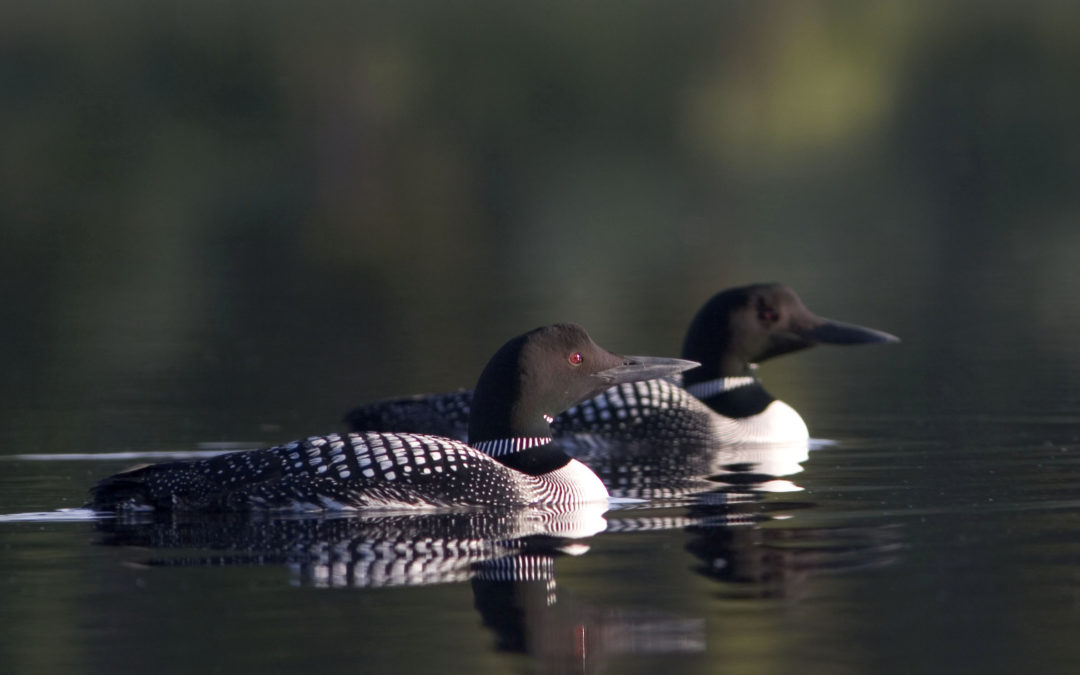
by jhwildlife | Sep 15, 2017 | Blog, Nature Mapping Jackson Hole
by Susan Patla, Non-game biologist for WGFD and NMJH Science Advisory Committee member
The call of a loon echoing across a still mountain lake is a sound that embodies the essence of wilderness. Biodiversity Research Institute (BRI), in partnership with Yellowstone and Grand Teton National Parks and Wyoming Game & Fish Department (WGFD), recently completed a fifth field season to monitor and study common loons in Wyoming. This project has been funded through a generous grant by the Ricketts Conservation Fund to determine the conservation status of loons in Wyoming and four other states. The loon is the rarest nesting bird species in Wyoming and a designated species of conservation concern. The Wyoming population is also the most southern nesting group in North America and isolated from the nearest neighboring population in Montana by over 200 miles. While migrating loons can be seen across the state both in spring and fall, breeding pairs currently occur only in the northwest part of the state.
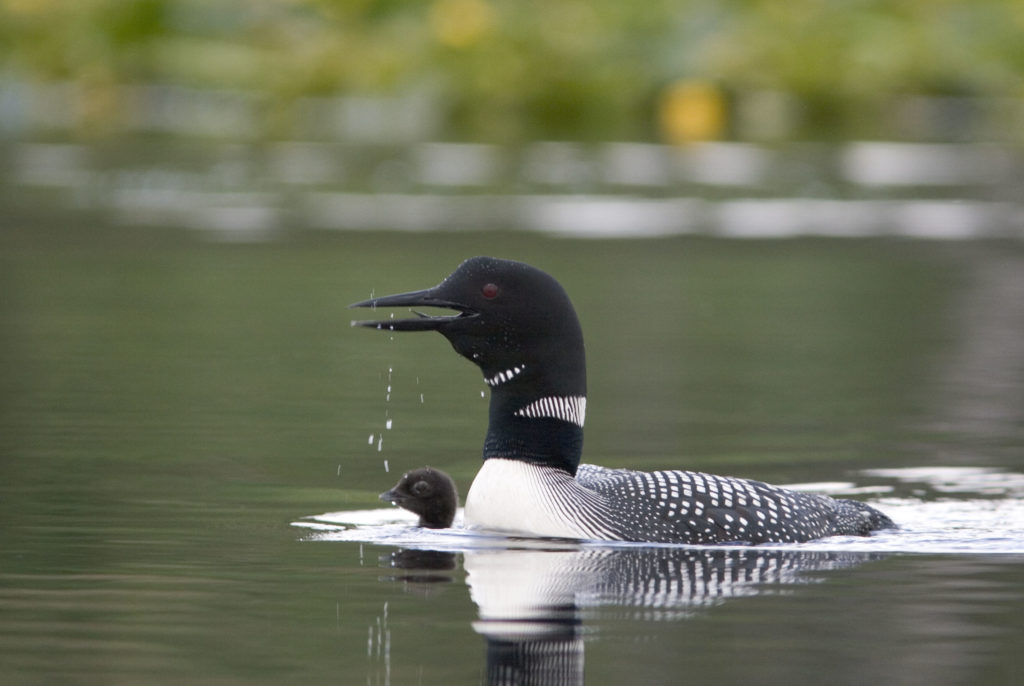
Since 1987, Yellowstone NP and WGFD have been monitoring the presence of loon pairs and fledged chicks. In 2013, BRI expanded on this effort through increased monitoring of pairs during the nesting season and the capture and banding of adult loons. In 2017, there were 21 territorial pairs documented (15 of which were in Yellowstone), and at least 12 of these attempted to nest. Eight pairs successfully hatched a total of ten chicks and all survived to fledging. Seven unpaired adults and one immature loon were also seen. One territorial female adult was captured and banded, and young were banded at two additional sites. Results from blood and feather samples for mercury and genetic analyses will be available later. BRI also deployed nest rafts at four sites and worked with agencies to implement management measures to protect nesting pairs.
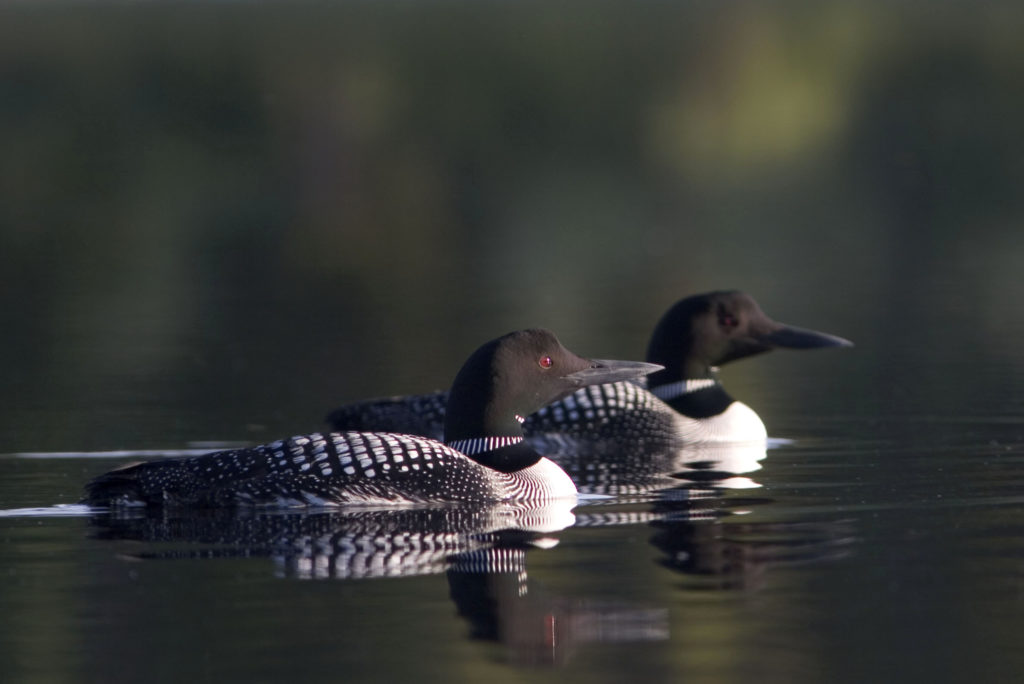
Compared to 2016, Wyoming had one fewer territorial pair and productivity was slightly lower than previous years. Nest success was affected this year by the above average snowfall, and late ice-out on many of the nesting lakes which were still frozen in early June. Rapid runoff resulted in flooding at a few sites also. Surveys of many backcountry lakes were also restricted in the early season due to lingering deep snow conditions. Productivity, however, over the study period has been above the 0.48 chicks surviving per territorial pair needed for population stability. Loons have been seen in recent years in the Wind River Range although no nesting pairs have been found. In the future, translocation of chicks may be considered to help expand the nesting population in Wyoming. Major threats to this population include human disturbance of nest sites, drought, and water quality. Mercury contamination, which has been a problem in New England loons, does not appear to be affecting Wyoming loons. All documentation of loons by Nature Mappers is greatly appreciated by BRI and the partner agencies to help in understanding the distribution and movements of this magnificent bird.
Click the image to enlarge and back button to get back to post. Photos by Mark Gocke, WGFD.
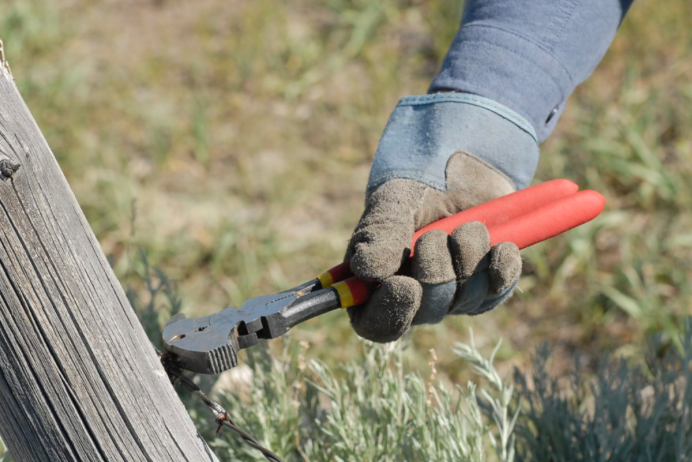
by jhwildlife | May 19, 2017 | Blog, Wildlife Friendlier Landscapes

Please join us Saturday, June 3 at Buffalo Valley Swan Pond, Bridger-Teton National Forest to volunteer to help with the removal of barbed wire and smooth wire fences.
Project Details
For our first public project of the year, we plan to remove .5 miles of barbed wire and smooth wire fencing in prime wildlife habitat in the Buffalo Valley. The work area is scenic and the terrain is flat and easily traversed. This project assists our partners at Bridger-Teton National Forest as they aim to make important habitat more permeable to wildlife movement.
The project is average in difficulty (3 on a 1-10 scale).
We will meet at two car pool sites:
- Home Ranch Parking Lot (north side) at 8:15 a.m.
- Gros Ventre Junction at 8:30 a.m.
We will carpool from these sites to the project. We plan to work from 9 a.m. to 2 p.m. and half-day (morning) is welcome, as well. We will provide water, Gatorade and snacks. Please bring your own water bottle or hydration packs. We will take a mid-day lunch break so please bring your own lunch.
Gear: You should wear layered clothes, long pants, sturdy shoes, and bring a rain jacket in case of storms. Sun or eyeglasses are a MUST for working with barbed wire. Sun protection (hat & sunscreen lotion) is also recommended, and will hopefully be necessary! We also recommend that volunteers check the status of their tetanus shots, in case of scratches from the old fencing material. We will provide work gloves and tools.
Please RSVP to jhwffencepull@gmail.com if you plan to attend and let us know at which car pool site you will join us (1 of 2 locations listed above). You can also send questions to this same email address. Additional last-minute information on this event will be posted here.
See you on June 3!






